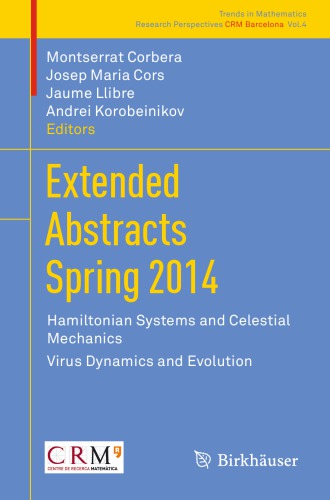

Most ebook files are in PDF format, so you can easily read them using various software such as Foxit Reader or directly on the Google Chrome browser.
Some ebook files are released by publishers in other formats such as .awz, .mobi, .epub, .fb2, etc. You may need to install specific software to read these formats on mobile/PC, such as Calibre.
Please read the tutorial at this link: https://ebookbell.com/faq
We offer FREE conversion to the popular formats you request; however, this may take some time. Therefore, right after payment, please email us, and we will try to provide the service as quickly as possible.
For some exceptional file formats or broken links (if any), please refrain from opening any disputes. Instead, email us first, and we will try to assist within a maximum of 6 hours.
EbookBell Team

4.1
30 reviewsThe two parts of the present volume contain extended conference abstracts corresponding to selected talks given by participants at the "Conference on Hamiltonian Systems and Celestial Mechanics 2014" (HAMSYS2014) (15 abstracts) and at the "Workshop on Virus Dynamics and Evolution" (12 abstracts), both held at the Centre de Recerca Matemàtica (CRM) in Barcelona from June 2nd to 6th, 2014, and from June 23th to 27th, 2014, respectively. Most of them are brief articles, containing preliminary presentations of new results not yet published in regular research journals. The articles are the result of a direct collaboration between active researchers in the area after working in a dynamic and productive atmosphere.
The first part is about Central Configurations, Periodic Orbits and Hamiltonian Systems with applications to Celestial Mechanics – a very modern and active field of research. The second part is dedicated to mathematical methods applied to viral dynamics and evolution. Mathematical modelling of biological evolution currently attracts the interest of both mathematicians and biologists. This material offers a variety of new exciting problems to mathematicians and reasonably inexpensive mathematical methods to evolutionary biologists. It will be of scientific interest to both communities.
The book is intended for established researchers, as well as for PhD and postdoctoral students who want to learn more about the latest advances in these highly active areas of research.